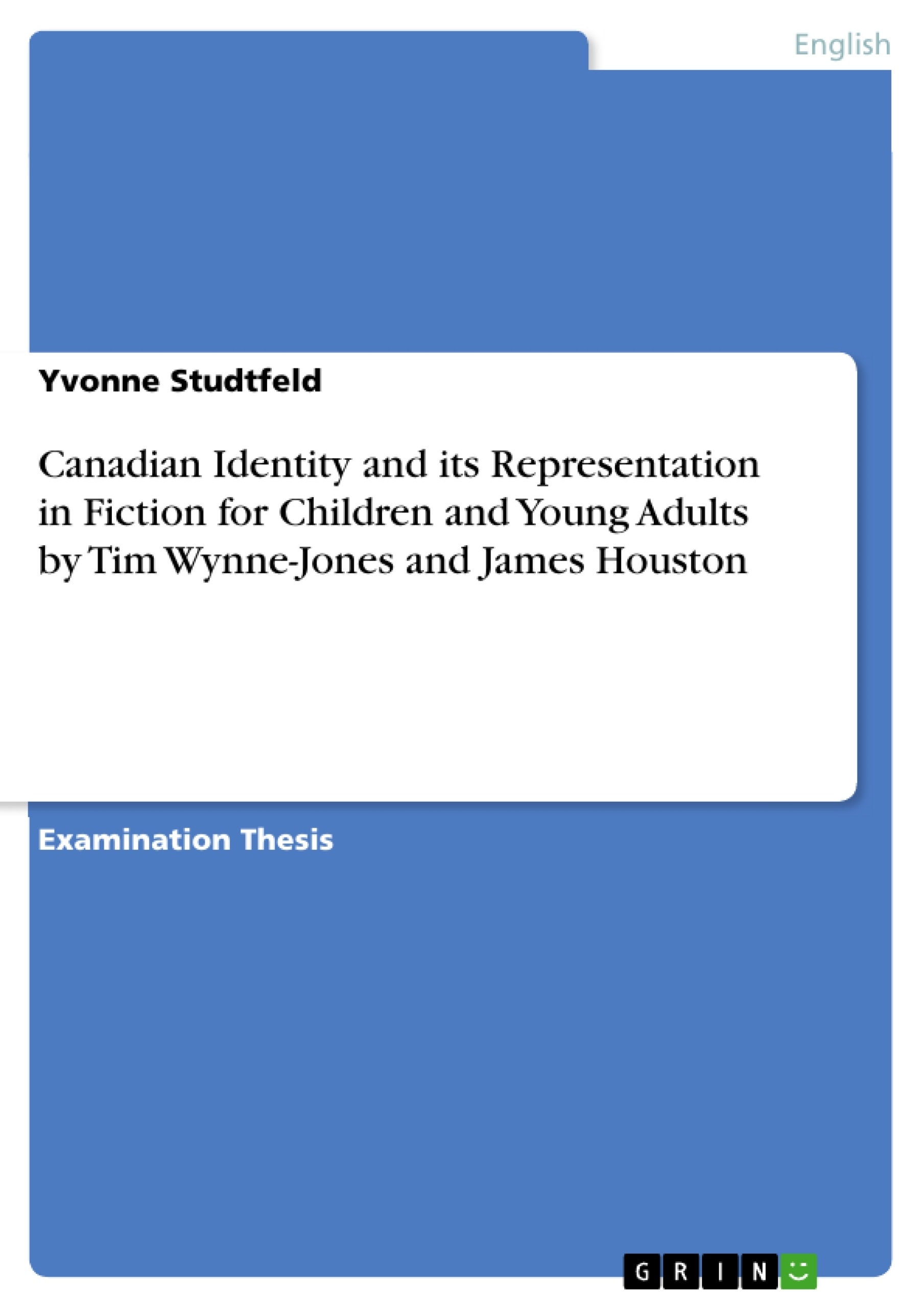“Since Canada’s literary tradition is fairly new, it is only natural that there should exist a genuine concern for identity.”1 Consequently, numerous works have addressed the question: What is Canadian about Canadian literature? A general answer is hard to find, among other reasons because the concept of Canadian identity as such is anything but trivial. The connections between national literature and national identity are generally acknowledged and have been thoroughly analysed. As Miriam Richter points out, [i]t is only very recently though, that the role of Canadian children’s literature in the process of defining national identity has come to be examined. Therefore, publications dealing exclusively with this topic exist to a comparatively small extent as yet.2 Despite the ongoing public and scholarly discussion of Canadian identity, it is important to ask whether the question of national identity is still a meaningful one when globalisation is changing the world and rendering national borders increasingly permeable. Economic alliances such as the North American Free Trade Agreement (NAFTA), which facilitates trade between Canada, The United States and Mexico, could work towards a relaxation not only of legal but also of cultural borders. There are economists who claim that national boundaries are no longer meaningful concepts, but even though the role of the nation-state has certainly changed in the process of globalisation, the state remains a meaningful force in the modern world.3 Anderson argues that: the ‘end of the era of nationalism,’ so long prophesied, is not remotely in sight. Indeed, nation-ness is the most universally legitimate value in the political life of our time.4 Besides the fact that there has been very little research done on the topic of identity in Canadian children’s literature, there is more reason to a substantiated interest in this area.
Inhaltsverzeichnis (Table of Contents)
- Introduction
- The concept of identity
- Personal identity
- Growing up
- Proper names
- National identity
- Authorship and publishing
- Identity through place
- The North
- The wilderness
- The northern wilderness
- The role of religion
- The role of multiculturalism
- The role of language
- The First Nations
- The role of history
- The role of the social community
- National literature in Canadian classrooms
- Conclusion
Zielsetzung und Themenschwerpunkte (Objectives and Key Themes)
This paper analyzes how Canadian identity is represented in Canadian children's literature through an examination of six novels by Tim Wynne-Jones and James Houston. The paper explores the concept of identity, focusing on both personal and national identity, and argues that Canadian children's literature plays a significant role in shaping and understanding national identity. The key themes explored in this paper include:- The complex and multifaceted nature of Canadian identity
- The role of literature in shaping personal and national identity
- The relationship between Canadian identity and the experiences of individuals, particularly children and adolescents
- The influence of historical, cultural, and geographical factors on Canadian identity
- The impact of multiculturalism and globalization on Canadian identity
Zusammenfassung der Kapitel (Chapter Summaries)
The introduction explores the significance of Canadian identity in contemporary literature, highlighting the importance of understanding how it is represented in works intended for young audiences. It argues that while the concept of Canadian identity is complex and ever-evolving, it remains a relevant and important area of study, particularly in light of the influence of globalization and multiculturalism. The paper then outlines the specific focus on the six novels by Tim Wynne-Jones and James Houston, and the rationale behind the choice of these works.
The second chapter delves into the concept of identity itself, offering a theoretical framework for understanding how identity is formed and expressed. It examines the diverse perspectives on identity, emphasizing the role of individual experiences, societal influences, and cultural contexts in shaping self-perception.
The third chapter focuses on personal identity, exploring how it is represented in the six novels. It analyzes the experiences of the protagonists as they navigate the challenges and complexities of growing up, including the development of self-awareness, the search for belonging, and the formation of personal values.
The fourth chapter examines the representation of national identity in the selected works. It analyzes the various elements that contribute to Canadian identity, including historical events, cultural traditions, geographical landscapes, and social structures. The chapter explores how these elements are portrayed in the novels, highlighting the interplay between personal and national identity in the stories.
The fifth chapter discusses the potential role of Canadian literature in educational settings. It examines the ways in which children's literature can contribute to the development of critical thinking skills, foster cultural awareness, and promote understanding of Canadian identity and history. The chapter highlights the importance of incorporating diverse voices and perspectives into educational curricula to ensure a comprehensive and inclusive understanding of Canadian identity.
Schlüsselwörter (Keywords)
This paper explores the representation of Canadian identity in children's literature. Key themes include: Canadian identity, children's literature, personal identity, national identity, multiculturalism, globalization, realistic fiction, literary analysis, educational implications.- Citation du texte
- Yvonne Studtfeld (Auteur), 2008, Canadian Identity and its Representation in Fiction for Children and Young Adults by Tim Wynne-Jones and James Houston, Munich, GRIN Verlag, https://www.grin.com/document/113140



